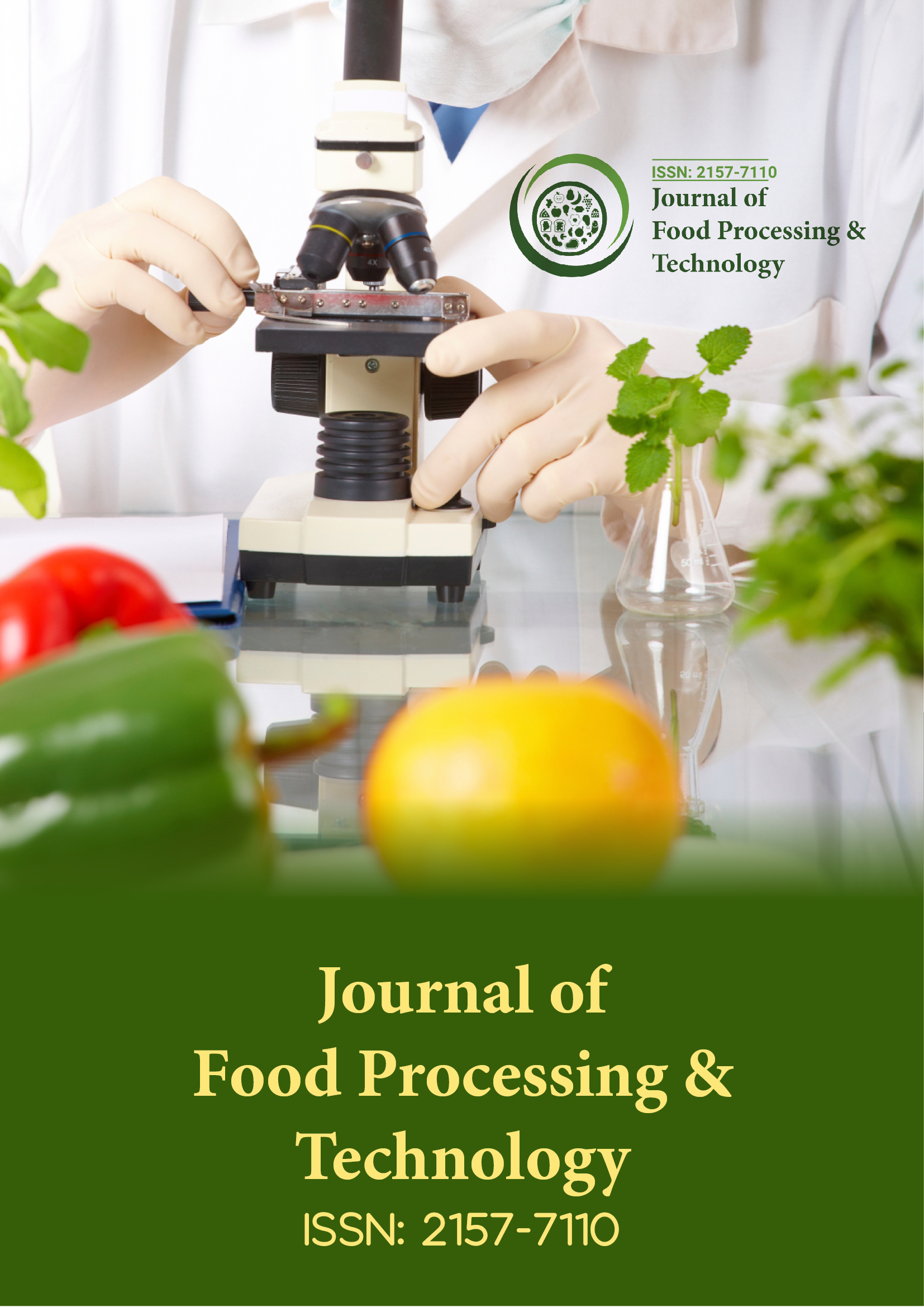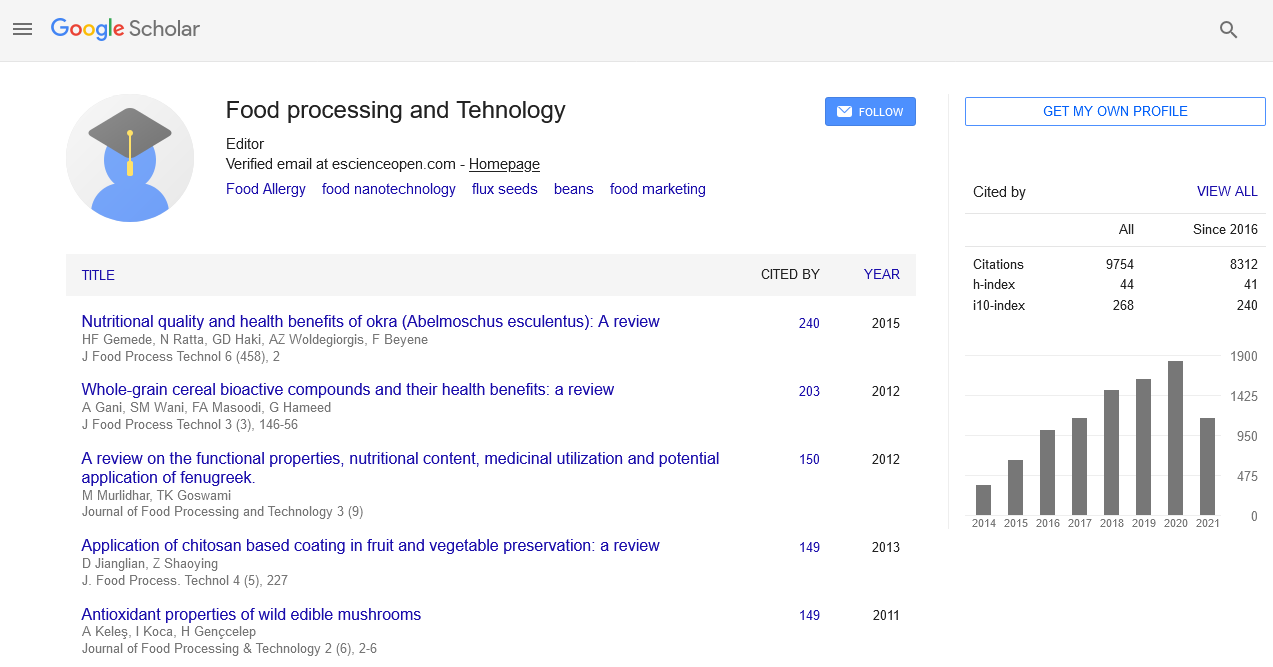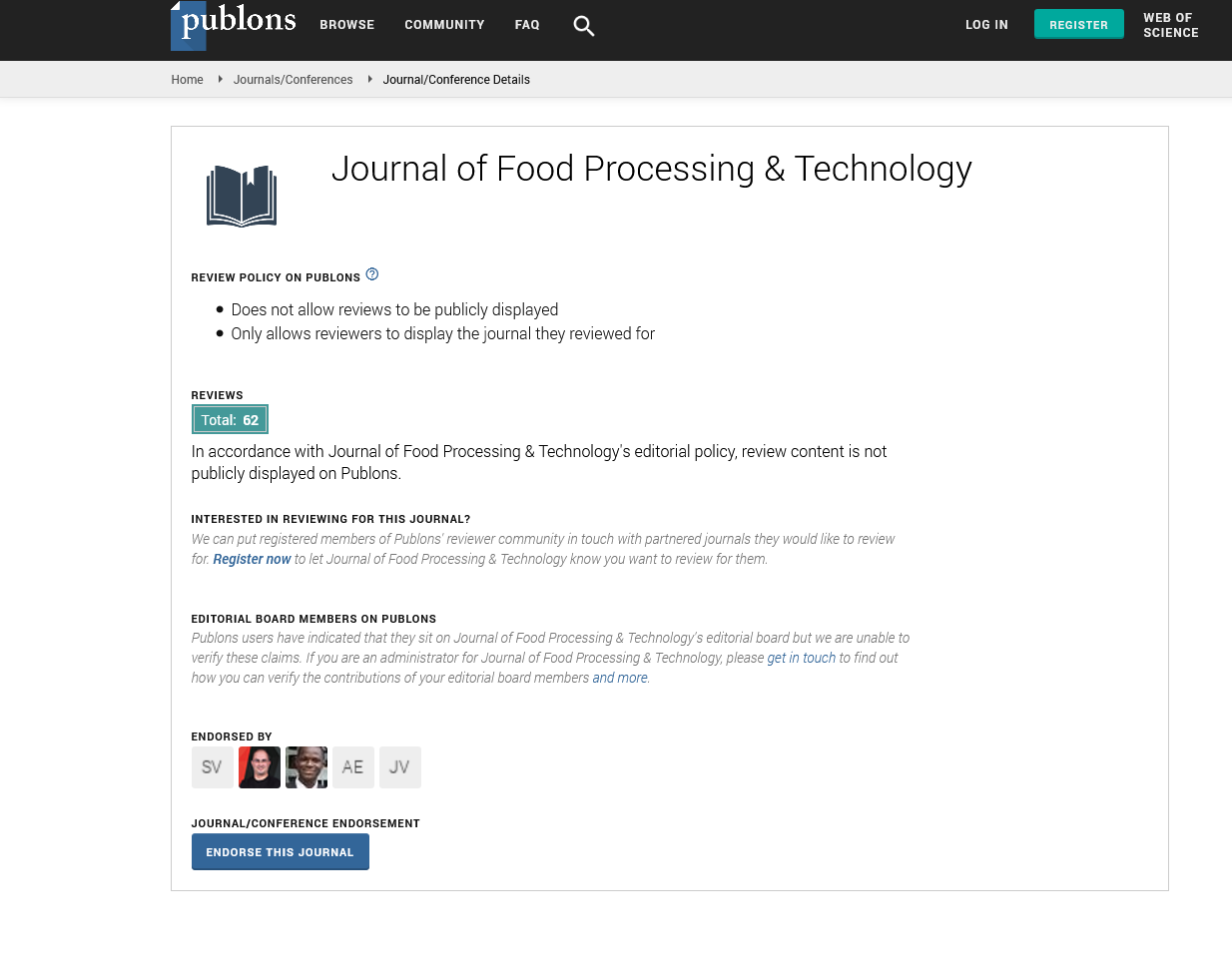Indexed In
- Genamics JournalSeek
- Academic Keys
- JournalTOCs
- China National Knowledge Infrastructure (CNKI)
- Access to Global Online Research in Agriculture (AGORA)
- Centre for Agriculture and Biosciences International (CABI)
- RefSeek
- Directory of Research Journal Indexing (DRJI)
- Hamdard University
- EBSCO A-Z
- OCLC- WorldCat
- Scholarsteer
- SWB online catalog
- Publons
- Euro Pub
- Google Scholar
Useful Links
Share This Page
Journal Flyer

Open Access Journals
- Agri and Aquaculture
- Biochemistry
- Bioinformatics & Systems Biology
- Business & Management
- Chemistry
- Clinical Sciences
- Engineering
- Food & Nutrition
- General Science
- Genetics & Molecular Biology
- Immunology & Microbiology
- Medical Sciences
- Neuroscience & Psychology
- Nursing & Health Care
- Pharmaceutical Sciences
Perspective - (2024) Volume 15, Issue 5
Regulatory Standards and Quality Control in Food Fortification
Lauren Katze*Received: 30-Sep-2024, Manuscript No. JFPT-24-26892; Editor assigned: 03-Oct-2024, Pre QC No. JFPT-24-26892 (PQ); Reviewed: 17-Oct-2024, QC No. JFPT-24-26892; Revised: 24-Oct-2024, Manuscript No. JFPT-24-26892 (R); Published: 31-Oct-2024, DOI: 10.35248/2157-7110.24.15.1129
Description
Food fortification the process of adding essential nutrients to food products to prevent deficiencies and improve overall health is a critical public health intervention. It addresses nutritional gaps in populations and contributes to the prevention of various deficiencies. However, the success of food fortification programs relies heavily on stringent regulatory standards and strong quality control measures. The regulatory frameworks governing food fortification, the importance of quality control and how these elements work together to ensure the effectiveness and safety of fortified foods.
Understanding food fortification
Food fortification involves adding vitamins, minerals, or other nutrients to foods to enhance their nutritional value. This can be done to staple foods (like salt, flour, or milk) or to specific products targeting certain population groups. The primary goal is to address deficiencies in key nutrients, such as iodine, iron, vitamin A and folic acid, which are prevalent in many populations.
Regulatory standards in food fortification
Regulatory standards are essential to ensure that food fortification programs are effective and safe. These standards vary by country but generally cover several key areas:
Nutrient levels and specifications: Regulatory bodies set standards for the types and amounts of nutrients that can be added to foods. These specifications ensure that fortification levels are both effective in preventing deficiencies and safe for consumption. For example, the World Health Organization (WHO) and national health agencies provide guidelines on the recommended nutrient levels for different types of foods and target populations.
Fortification procedures: Regulatory standards also outline the procedures for fortifying foods, including the types of nutrient forms used, the methods of incorporation and the stability of the added nutrients. These guidelines help ensure that the nutrients remain effective throughout the product’s shelf life. For instance, guidelines might specify the use of certain forms of vitamins or minerals that have been proven to be stable and bioavailable.
Labeling requirements: Accurate labeling is essential for informing consumers about the nutritional content of fortified foods. Regulations typically require that labels clearly indicate the presence and amount of added nutrients, as well as any health claims associated with the fortification. This transparency helps consumers make informed choices and understand the benefits of consuming fortified products.
Monitoring and compliance: Regulatory agencies are responsible for monitoring the implementation of food fortification programs to ensure compliance with established standards. This involves regular inspections, sampling and testing of fortified foods to verify that they meet regulatory requirements. Agencies also enforce compliance through penalties or corrective actions if standards are not met.
Public health policies: Regulatory standards are often part of broader public health policies aimed at addressing specific nutritional deficiencies. For example, policies may mandate the fortification of salt with iodine in regions where iodine deficiency is prevalent or require the addition of folic acid to flour to prevent neural tube defects.
Quality control in food fortification
Quality control is a critical component of food fortification, ensuring that fortified foods consistently meet regulatory standards and deliver the intended health benefits. Key aspects of quality control include:
Raw material quality: The quality of raw materials used in food fortification directly affects the final product. Quality control measures involve testing raw materials for purity, potency and consistency. For example, the vitamins and minerals used in fortification must be of high quality and meet specified standards to ensure they are effective and safe.
Process control: Maintaining control over the fortification process is essential to ensure that the correct amount of nutrients is added to the food product. This involves monitoring the mixing and incorporation of nutrients, as well as controlling factors like temperature and humidity that could affect nutrient stability. Process control measures include regular calibration of equipment and verification of nutrient levels during production.
Product testing: Fortified foods must be regularly tested to ensure they contain the correct levels of added nutrients. This includes testing finished products for nutrient content and stability throughout their shelf life. Testing helps verify that the fortification process has been effective and that the product remains compliant with regulatory standards.
Shelf-life studies: Shelf-life studies are conducted to assess how well the added nutrients retain their potency over time. This involves storing fortified foods under various conditions and periodically testing them for nutrient levels. Shelf-life studies help determine appropriate expiration dates and ensure that the product remains beneficial until the end of its shelf life.
Documentation and record-keeping: Accurate documentation and record-keeping are vital for quality control. This includes maintaining records of raw material specifications, production processes, test results and any corrective actions taken. Comprehensive records facilitate traceability and accountability, allowing for swift responses to any quality issues that arise.
Regulatory standards and quality control are essential to the success of food fortification programs, ensuring that fortified foods are safe, effective and of high quality. By establishing clear guidelines for nutrient levels, fortification procedures, labeling and compliance, regulatory agencies help protect public health and address nutritional deficiencies. Rigorous quality control measures further ensure that fortified foods meet these standards and deliver their intended benefits. As food fortification continues to evolve, ongoing innovation, collaboration, and adherence to high standards will be key to achieving better health outcomes and addressing global nutritional challenges.
Citation: Katze L (2024). Regulatory Standards and Quality Control in Food Fortificatione. J Food Process Technol. 15:1129.
Copyright: © 2024 Katze L. This is an open-access article distributed under the terms of the Creative Commons Attribution License, which permits unrestricted use, distribution, and reproduction in any medium, provided the original author and source are credited.


